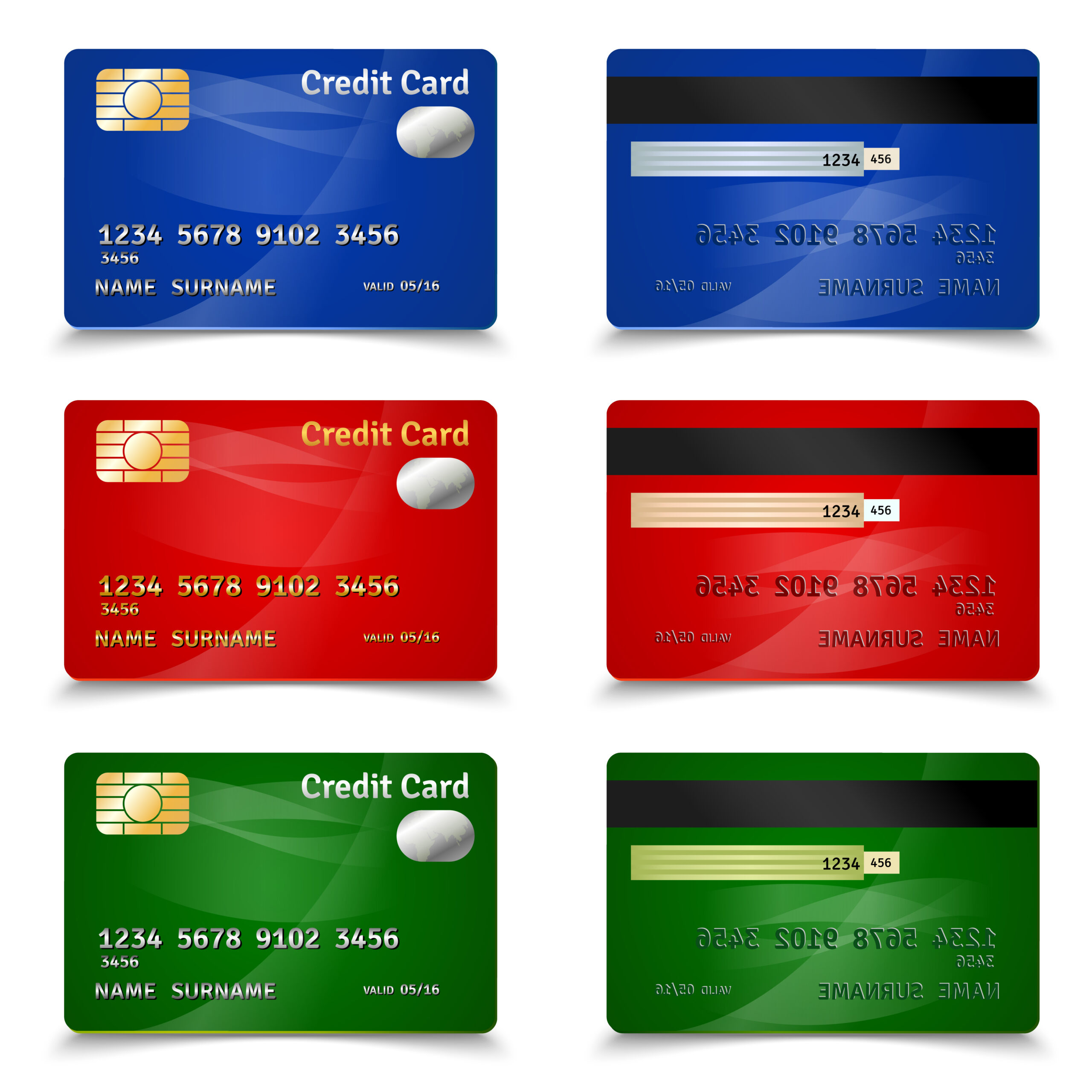Credit cards have become an integral part of our lives, providing us with convenience and financial flexibility. However, beyond their practicality, credit cards are also a form of self-expression and a reflection of personal style. The design of credit cards plays a crucial role in attracting customers, enhancing brand image, and influencing consumer behavior. In this article, we will delve into the world of credit card design, exploring the factors that make a credit card visually appealing, the impact of design on consumer perception, and the innovative trends shaping the future of credit card aesthetics.
The Power of Visual Appeal
When it comes to credit cards, first impressions matter. The design of a credit card can greatly influence a customer’s decision to apply for it or choose it as their preferred payment method. A visually appealing credit card has the power to captivate and create a positive emotional response, which in turn enhances brand loyalty and trust. In fact, research shows that consumers are more likely to spend money using a visually attractive credit card compared to a plain one.
The visual appeal of a credit card is determined by various design elements, including color, typography, imagery, and overall layout. Let’s explore each of these elements in detail:
1. Color
Color is one of the most influential design elements that can evoke emotions, convey brand personality, and create visual harmony. Different colors have different psychological effects on individuals, and credit card issuers often leverage this knowledge to create a specific brand image or target a particular demographic.
For example, vibrant and bold colors like red or orange can evoke a sense of excitement and energy, making them ideal for credit cards targeted at younger audiences or those seeking rewards and perks. On the other hand, muted and sophisticated colors like navy blue or silver convey a sense of trust, reliability, and exclusivity, making them popular choices for premium credit cards.
Furthermore, the careful selection and combination of colors can enhance readability, ensuring that important information on the card, such as the cardholder’s name and the card number, is easily legible. Contrast between the background color and the text color is essential to ensure readability, especially for individuals with visual impairments.
2. Typography
The typography used on a credit card not only affects its visual appeal but also plays a crucial role in conveying key information effectively. The choice of font, size, spacing, and alignment can greatly impact the user experience and ease of card usage.
The font used for the cardholder’s name, for instance, should be clear and legible, ensuring that it stands out against the background. It is important to strike a balance between aesthetics and functionality to ensure that the cardholder’s name is visually appealing while being easily readable by card terminals and merchants.
Similarly, the font used for the card number, expiration date, and other essential details should be clear and easy to read to avoid any confusion during transactions. Additionally, the spacing and alignment of these details should be carefully considered to create a visually pleasing and organized layout.
3. Imagery
Imagery on credit cards can range from simple logos to intricate designs, depending on the brand and its target audience. The use of imagery can evoke emotions, create brand recognition, and tell a story. Credit card issuers often incorporate imagery that aligns with their brand values and resonates with their target customers.
For example, a credit card designed for travel enthusiasts may feature iconic landmarks or images of exotic destinations, inspiring cardholders to pursue their wanderlust. On the other hand, a credit card associated with a luxury brand may feature minimalist and elegant designs that reflect sophistication and exclusivity.
However, it is essential to strike a balance between the imagery and the functional elements of a credit card. The imagery should not overpower or distract from the essential details, such as the cardholder’s name and the card number. The placement and size of the imagery should be carefully considered to ensure that it enhances the overall design without compromising usability.
4. Overall Layout
The overall layout of a credit card encompasses the arrangement of various design elements, including the cardholder’s name, card number, issuer’s logo, and additional branding elements. A well-designed layout should not only be visually appealing but also ensure usability and ease of card usage.
The cardholder’s name should be prominently displayed, making it easy to identify the card owner. It should be positioned in a way that it does not get obstructed by other design elements or affected by wear and tear. The card number, expiration date, and security code should be clearly visible and logically arranged to facilitate easy transactions.
Additionally, the issuer’s logo and branding elements should be strategically placed to enhance brand recognition and create a cohesive visual identity. The size and positioning of these elements should be carefully considered to maintain a balanced and harmonious design.
The Psychology of Design
Beyond the visual appeal, credit card design also has a profound impact on consumer perception, behavior, and decision-making. Understanding the psychology behind design can help credit card issuers create designs that resonate with their target customers and drive desired behaviors.
Let’s explore some key psychological principles that influence consumer perception of credit card design:
1. Brand Association
Credit card design serves as a powerful tool for establishing and reinforcing brand association. The design elements used on a credit card can evoke certain emotions and create a connection between the brand and the cardholder.
For instance, a credit card associated with a charitable organization may incorporate imagery or colors that evoke feelings of empathy and social responsibility. By doing so, the credit card issuer strengthens the association between their brand and the values that resonate with their target customers, ultimately driving loyalty and trust.
Similarly, credit cards that feature images or branding elements associated with a specific lifestyle, such as fitness or adventure, can create a sense of identity and belonging for the cardholder. This association with a desired lifestyle can be a powerful motivator for individuals to choose and use a particular credit card.
2. Perceived Value and Status
Credit card design can influence the perceived value and status associated with a particular card. Premium credit cards, for example, often feature designs that convey exclusivity and luxury, appealing to individuals who seek a high-status symbol.
By incorporating premium materials, such as metal or unique finishing techniques, credit card issuers can enhance the perceived value of their cards. These design elements communicate to the cardholder that they are part of an elite group, enjoying special privileges and benefits.
On the other hand, credit cards targeted at younger audiences or individuals seeking rewards and perks may incorporate playful and vibrant designs that convey a sense of fun and excitement. These designs communicate the value of the card in terms of the experiences and benefits it provides, appealing to individuals who prioritize rewards and incentives.
3. Trust and Security
Credit card design plays a crucial role in establishing trust and conveying a sense of security to the cardholder. A well-designed credit card should instill confidence in the cardholder, assuring them that their financial information is protected and their transactions are secure.
Security features, such as holograms, microprinting, or UV inks, can be incorporated into the design to combat counterfeiting and fraud. These features not only enhance the security of the card but also serve as visual cues that signal authenticity to the cardholder and merchants.
Additionally, a clean and organized design can create a perception of professionalism and reliability. The use of clear typography and logical layout ensures that the cardholder can easily locate and read important information, minimizing the risk of errors during transactions.
Innovative Trends in Credit Card Design
Credit card design is constantly evolving, driven by advancements in technology, changing consumer preferences, and emerging market trends. To stay relevant and capture the attention of their target customers, credit card issuers are embracing innovative design concepts and incorporating cutting-edge technologies.
1. Minimalist Design
In recent years, minimalist design has gained popularity in various industries, including credit card design. Minimalist credit cards feature clean lines, simple typography, and a focus on essential details, creating an elegant and timeless aesthetic.
Minimalist designs not only enhance readability and usability but also convey a sense of sophistication and exclusivity. By removing unnecessary clutter and distractions, such as excessive branding elements or intricate patterns, minimalist credit cards create a sleek and refined look that appeals to individuals seeking a minimalist lifestyle.
Furthermore, minimalist designs have the advantage of being adaptable to various color schemes and branding elements, making them a versatile choice for credit card issuers. This flexibility allows credit card issuers to cater to different target markets and effectively communicate their brand values.
2. Biometric Technology
As technology continues to advance, credit card issuers are exploring innovative ways to enhance security and streamline transactions. Biometric technology, such as fingerprint or facial recognition, is being integrated into credit cards to provide a secure and convenient payment experience.
Credit cards with biometric authentication feature a small fingerprint sensor or a camera that captures the cardholder’s facial features. This technology adds an extra layer of security, ensuring that only the authorized cardholder can make transactions.
Beyond security, biometric credit cards offer a seamless and frictionless payment experience. Instead of entering a PIN or signing a receipt, the cardholder simply needs to authenticate their identityby placing their finger on the sensor or allowing their face to be scanned. This not only saves time but also reduces the risk of fraudulent transactions.
3. Customization Options
To cater to individual preferences and enhance personalization, credit card issuers are offering customization options to their customers. This trend allows cardholders to design their own credit cards by choosing from a variety of colors, patterns, and even uploading personal images.
Customizable credit cards enable individuals to express their unique style and personality, making the card more meaningful and memorable. It also creates a stronger emotional connection between the cardholder and the brand, fostering loyalty and long-term engagement.
Furthermore, customization options can be a powerful marketing tool for credit card issuers. By allowing customers to design their own cards, issuers can gather valuable data on customer preferences and gain insights into consumer behavior.
4. Eco-Friendly Materials
As sustainability becomes a growing concern worldwide, credit card issuers are incorporating eco-friendly materials into their designs. By using materials that are recyclable, biodegradable, or made from renewable resources, credit card issuers can reduce their environmental impact and appeal to environmentally conscious consumers.
For example, some credit cards are now made from recycled plastic or sustainable materials like bamboo or cork. These materials not only contribute to a more sustainable future but also add a unique and natural aesthetic to the card design.
In addition to eco-friendly materials, credit card issuers are also exploring options for reducing the carbon footprint associated with credit card production and distribution. This includes minimizing packaging waste and adopting digital alternatives, such as virtual cards or mobile payment solutions.
Conclusion
Credit card design goes beyond aesthetics; it is a powerful tool for attracting customers, enhancing brand image, and influencing consumer behavior. The visual appeal of a credit card, determined by elements such as color, typography, imagery, and overall layout, plays a crucial role in creating a positive emotional response and driving card usage.
Moreover, credit card design has a profound impact on consumer perception, behavior, and decision-making. It establishes brand association, influences perceived value and status, and conveys trust and security. Understanding the psychology behind design enables credit card issuers to create designs that resonate with their target customers and drive desired behaviors.
The future of credit card design is marked by innovative trends that embrace minimalism, incorporate biometric technology, offer customization options, and prioritize eco-friendly materials. These trends not only enhance the user experience but also align with evolving consumer preferences and market demands.
FAQs
1. Can I customize the design of my credit card?
Yes, many credit card issuers offer customization options that allow you to design your own credit card. You can choose from a range of colors, patterns, and even upload personal images to create a unique card that reflects your style and personality.
2. How does credit card design impact my spending habits?
Credit card design can influence your spending habits by creating a positive emotional response, enhancing brand loyalty, and influencing perceived value. Visually attractive credit cards may encourage you to use them more frequently and spend more money compared to plain cards.
3. Are there any security features in credit card design?
Yes, credit card design incorporates security features to protect against counterfeiting and fraud. These features can include holograms, microprinting, UV inks, and biometric technology (such as fingerprint or facial recognition) to ensure the authenticity of the card and enhance transaction security.
4. What are the benefits of minimalist credit card design?
Minimalist credit card designs offer several benefits. They enhance readability and usability, convey sophistication and exclusivity, and provide a timeless aesthetic. Minimalist designs also allow for versatility in color schemes and branding elements, making them adaptable to different target markets.
5. How are credit card issuers addressing sustainability in design?
Credit card issuers are addressing sustainability in design by incorporating eco-friendly materials, such as recycled plastic, bamboo, or cork. They are also exploring ways to reduce the carbon footprint associated with credit card production and distribution, such as minimizing packaging waste and adopting digital alternatives.
Summary
Credit card design goes beyond aesthetics; it is a powerful tool for attracting customers, enhancing brand image, and influencing consumer behavior. The visual appeal of a credit card, determined by elements such as color, typography, imagery, and overall layout, plays a crucial role in creating a positive emotional response and driving card usage.
Credit card design also has a profound impact on consumer perception, behavior, and decision-making. It establishes brand association, influences perceived value and status, and conveys trust and security. Understanding the psychology behind design enables credit card issuers to create designs that resonate with their target customers and drive desired behaviors.
The future of credit card design is marked by innovative trends that embrace minimalism, incorporate biometric technology, offer customization options, and prioritize eco-friendly materials. These trends not only enhance the user experience but also align with evolving consumer preferences and market demands. By staying informed and embracing these trends, credit card issuers can create visually appealing and functional designs that capture the attention of their target customers and foster long-term loyalty.





